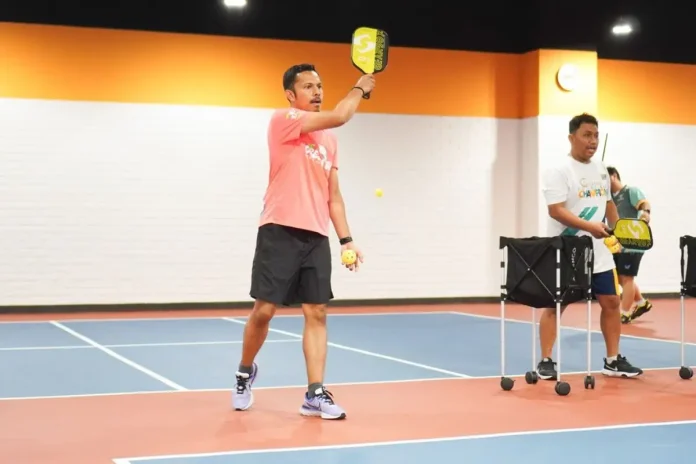Pickleball Dink Fundamentals: Mastering the dink is one of the most important skills in pickleball. It allows players to slow the game down, control the net, and force errors from opponents. Learning the right dinking fundamentals can make the difference between winning and losing in tight matches.
Why Dinking Matters
Dinking is a soft shot hit at the kitchen line. It’s not meant to be powerful—it’s meant to be smart. When done right, it keeps opponents from attacking and creates space to set up a winning pickleball shot. Improving your dinks starts with understanding the basics and practicing them the right way.
Stay Low and Stay Balanced
Players should keep their knees bent and stay on the balls of their feet. This low stance gives better balance and makes it easier to move quickly or stretch for wide shots.
Keep the Paddle in Front
The pickleball paddle should always stay in front of your body. This position helps players react faster and stay in control during dink battles at the kitchen line.
Lighten the Grip
Holding the paddle too tightly can make shots bounce too high. A light grip—about 3 or 4 on a scale of 10—helps keep dinks soft and controlled.
Use a Simple Swing
Players should use their shoulder and arm, not their wrist, for most of the motion. Big swings make mistakes more likely. Keeping things short and controlled is best.
Aim Just Over the Net
Good dinks don’t go too high. They should clear the net by a few inches and land in the kitchen. High dinks give the opponent a chance to attack.

Hit to Tough Spots
Smart dinks land near the opponent’s feet or in the corners. These placements are harder to return and can lead to mistakes.
Choose Cross-Court Dinks
Cross-court dinks are safer. They give more space to work with and the net is slightly lower in the middle. This type of dink also pulls opponents out wide, opening space later.
Don’t Rush the Point
Patience is key when dinking. Players should wait for the right time to attack. A pop-up or high ball is the signal to go for a putaway shot.
Add Spin Carefully
Adding topspin or backspin can make a dink bounce differently. But spin should only be used after mastering consistent soft shots. Spin is helpful, but not a must-have skill at the start.
Practice Often
The best way to improve is through reps. Players should drill cross-court dinks, straight-on shots, and dinks from both the forehand and backhand. A goal of 10 to 20-shot rallies builds control and muscle memory.
Importance of the Dink Game
A strong dink game helps players win points without needing power. It builds pressure on the opponent and keeps you in control at the kitchen. For anyone looking to compete and win, solid dinking is a must.
News in Brief: Pickleball Dink Fundamentals
Dinking is a key pickleball skill that controls the pace and sets up winning shots. To improve, players should stay low, use a soft grip, aim low, and drill often. The right dink strategy helps keep points under control and can be the difference between winning and losing at the net.
ALSO READ: Master the Midcourt: DJ Howard’s 3-Person Pickleball Drill Transforms Game Strategy

